Pet Preparation For An Emergency
Every now and then, your pet may experience an emergency where it needs some medical attention. Or, a hurricane, tornado, fire or any other type of natural disaster that strikes, may mean you will have to evacuate your home. How do I prepare for these emergencies? What type of care should I do to prepare my dog for these emergencies? Are you ready if a disaster should strike? This is where emergency care for dogs will provide you with sufficient information to help your pet until help arrives or getting him to the veterinarian’s office.

You never know when an emergency will strike, however, when it does, being prepared in advance can save the life of your pet.
By providing pet parents with this valuable information it will provide them with what’s needed prior to getting their pet to the animal hospital and what they need to do in advance before taking the dog there.
Below are some helpful and valuable emergency tips for you to consider when taking care of your dog in any emergency.
The following emergency care dog topics will be covered below:
- Emergency First Aid Tips
- Putting Together A First-Aid Pet Supply Kit
- Emergency Pet First Aid
- a. Poisoning and Exposure To Toxins
b. Seizures
c. Fractures
d. External Bleeding
e. Internal Bleeding
f. Burns
g. Choking
h. Heatstroke
i. Shock
j. What To Do If Pet Is Not Breathing
k. What To Do If Pet Has No Heartbeat - Evacuation Check List
- Conclusion
Emergency First Aid Tips
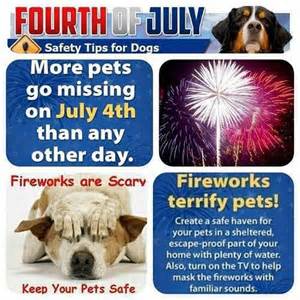
If possible, try to get your pet to the veterinarian as soon as you can. Call first. If they are not open, try to find the nearest emergency pet clinic. Keep these numbers near your telephone at all times. Inform all family members where they are located in case an emergency should strike while you are out shopping or doing errands.
Unless you are trained, do not try to give your pet CPR or induce vomiting unless directed by a veterinarian. Seek immediate veterinarian care or assistance if your pet is having difficulty in breathing.
Here are some tips that you can do before bringing your pet to the clinic or hospital:
- Wrap your pet in a heavy towel or blanket to keep warm and restrict movements.
- Apply a pressure bandage to stem or stop any bleeding of a cut or bite.
- Apply a cold compress to a burn and gently hold it there until you get to the clinic.
- Do not induce vomiting if you suspect or know if your pet has swallowed a poisonous substance.
- Do not attempt to remove any item if your pet is drooling, gagging, or has difficulty in swallowing.
- Take your pet to a cool place if he suffers from heatstroke and sponge him with cold water. Encourage your pet to drink small amounts of water.
- If your dog suffers from frostbite, place him in a warm room immediately. Thaw the frostbitten areas slowly by apply warm moist towels and change them frequently until the area becomes flushed. If severe frostbite, take your dog to the veterinarian as soon as possible.
Back to Emergency Care for Dogs Topics
Putting Together A First Aid Pet Supply Kit
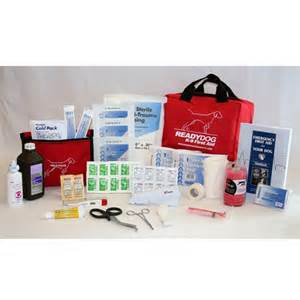
You need to be prepared for any medical emergency and the best thing you can do as a pet owner is to have an emergency pet kit handy. Putting together a first aid kit may seem difficult at first, below are some of the basic items you will need to have in your pet’s first-aid kit.
- Veterinarian’s name and phone number (tape it to the lid)
- Animal Poison Control Center’s phone number (1-888-426-4435, tape it to the lid)
- Gauze – For wrapping wounds or muzzling the injured animal to prevent bites
- Nonstick bandages, towels, or strips of clean cloth – To control bleeding or protect visible wounds
- Adhesive tape for bandages – Do not use human adhesive bandages (Band-Aids) on pets – This helps to secure the gauze wrap or bandage
- Milk of magnesia – Used to absorb the poison Activated charcoal – Used to absorb the poison
- Hydrogen peroxide (3%) – Used to induce vomiting
- Digital Thermometer – To take your pet’s temperature
- Eye dropper (or large syringe without needle) – To give oral treatments or flush wounds
- Muzzle (in an emergency a rope, necktie, soft cloth, nylon stocking, small towel may be used) – To cover your pet’s head. If your pet is vomiting, do not muzzle it
- Leash – For transporting your pet (if your pet is capable of walking without further injury)
- Stretcher (in an emergency a door, board, blanket or floor mat may be used) – To stabilize the injured animal and prevent further injury during transport
- Scissors – To cut bandages and other things
- Nail clippers – To trim nails
- Tweezers – To remove any objects from dog’s coat or hair
- Kwik Stop Styptic Powder – To stop bleeding if when cutting nails to short
- Rubber gloves – In case you have to touch open wounds
- Saline solution or Eye wash – Used to flush out pets eyes if needed
- Battery operated hair clipper – To clip away long hair
- Extra Batteries
- Sterol anointment
- Antibiotic Anointment
- Poop Bags – For sanitation purposes
- Food and Treats – In the event you must evacuate
- Water – In the event you must evacuate
- One of his favorite toys – This will help keep him calm
- Food & Water bowls – In the event you must evacuate
- Proof of Ownership – In event dog get’s lost
- Pictures – Of you and your dog
- Vaccination records (copy will do) – In the event you must evacuate
- Medications – In the event you must evacuate
- Collar & Tag – Showing pet’s name / phone number / address in the event your pet gets lost or missing
These are some of the basic things you will need. You can add to this list as you deem necessary for your specific breed of pet.
Back to Emergency Care for Dogs Topics
Emergency Pet First Aid
There may be times when you will have to perform some quick pet first aid. Below are some tips that will help you for certain types of emergency conditions.
Poisoning and Exposure to Toxins
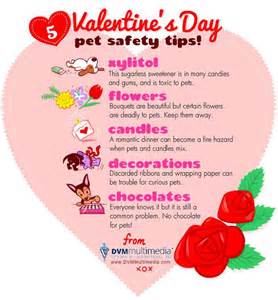
Poisoning is usually a condition that will cause you a deal of confusion. A good rule of thumb to follow is; any products that are harmful for humans are also harmful for pets. Below are a few of these products:
- Cleaning products
- Rodent poisons
- Antifreeze
- Harmful dog food items: Chocolate, Egg Whites, Nutmeg, Mushrooms, Cat Food, Avocado, Bread Dough, Alcohol (all forms), Grapes, Raisins, Hops, Macadamia Nuts, Moldy Food, Onions, Garlic, and Xylitol (a sweetener)
The AVMA brochure Household Hazards offers a summary of what foods and common household items may pose a danger to your pet click on the link Household hazards to learn more.
If your pet should be exposed to any poison or has consumed something do the following:
- Check to see if your pet’s skin or eyes are exposed to a toxic product (such as many cleaning products), check the product label for the instructions for people exposed to the product; if the label instructs you to wash your hands with soap and water if you’re exposed, then wash your pet’s skin with soap and water (don’t get any into its eyes, mouth or nose). If the label tells you to flush the skin or eyes with water, do this for your pet as soon as possible (if you can do it safely), and call a veterinarian immediately.
- If you know your pet has consumed something that may be harmful, or if the pet is having seizures, losing consciousness, is unconscious or is having difficulty breathing, telephone your veterinarian, emergency veterinary clinic if available or the Animal Poison Control Center hotline 1-888-426-4435 available 365 days/year, 24 hours/day) immediately. There will be a fee for the consultation.
If possible, have the following information available:
- Species, breed, age, sex, weight and number of animals involved
- Symptoms your pet is experiencing
- Name/description of the substance that is in question; the amount the animal was exposed to; and the length of time of the exposure (how long it’s been since your pet ate it or was exposed to it).
- Have the product container/packaging available for reference.
Collect any material your pet may have vomited or chewed, and place it in a plastic seal-able bag to take with you when you bring your animal in for veterinary treatment.
Back to Emergency Care for Dogs Topics
Seizures
If your pet should have a seizure, follow the steps below:
- Keep your pet away from any objects (including furniture) that might harm him. Do not try to restrain the pet.
- Time the seizure (they usually last 2-3 minutes).
- After the seizure has stopped, keep your pet as warm and quiet as possible and contact your veterinarian.
Back to Emergency Care for Dogs Topics
Fractures
If your put should suffer from a fracture, do the following:
- Muzzle
your pet.
- Gently lay your pet on a flat surface for support.
- While transporting your injured pet to a veterinarian, use a stretcher (you can use a board or other firm surface as a stretcher, or use a throw rug or blanket as a sling). If possible, secure the pet to the stretcher (make sure you don’t put pressure on the injured area or the animal’s chest) for transport—this may be as simple as wrapping a blanket around them.
- You can attempt to set the fracture with a homemade splint, but remember that a badly-placed splint may cause more harm than good. If in doubt, it is always best to leave the bandaging and splinting to a veterinarian.
Back to Emergency Care for Dogs Topics
External Bleeding
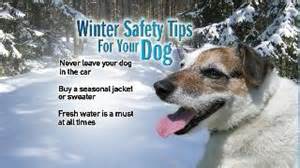
- Muzzle your pet.
- Press a clean, thick gauze pad over the wound, and keep pressure over the wound with your hand until the blood starts clotting. This will often take several minutes for the clot to be strong enough to stop the bleeding. Instead of checking it every few seconds to see if it has clotted, hold pressure on it for a minimum of 3 minutes and then check it.
- If bleeding is severe and on the legs, apply a tourniquet (using an elastic band or gauze) between the wound and the body, and apply a bandage and pressure over the wound. Loosen the tourniquet for 20 seconds every 15-20 minutes. Severe bleeding can quickly be life-threatening—get your animal to a veterinarian quickly as possible if this occurs.
Back to Emergency Care for Dogs Topics
Internal Bleeding
- Symptoms: bleeding from nose, mouth, rectum, coughing up blood, blood in urine, pale gums, collapse, weak and rapid pulse.
- Keep animal as warm and quiet as possible and transport immediately to a veterinarian.
Back to Emergency Care for Dogs Topics
Burns
Chemical
-
- Muzzle the animal.
- Flush burn immediately with large quantities of water.
- Contact your veterinarian if further treatment is necessary.
Severe
-
- Muzzle the animal.
- Quickly apply ice water compress to burned area.
- Contact your veterinarian if further treatment is required.
Back to Emergency Care for Dogs Topics
Choking
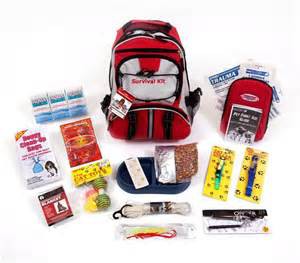
Below are some good tips in the event your dog should be chocking on an object or something else. Be sure to have an emergency kit available for such emergencies.
- Symptoms: difficulty breathing, excessive pawing at the mouth, choking sounds when breathing or coughing, blue-tinged lips/tongue.
- Do not muzzle.
- Use caution – a choking pet is more likely to bite in its panic.
- If the pet can still breathe, keep it calm and get it to a veterinarian.
- Look into the pet’s mouth to see if a foreign object is visible. If you see an object, gently try to remove it with pliers or tweezers, but be careful not to push the object further down the throat. Don’t spend a lot of time trying to remove it if it’s not easy to reach—don’t delay, and get your pet to a veterinarian immediately.
- If you can’t remove the object or your pet collapses, place both hands on the side of your pet’s rib cage and apply firm quick pressure, or lay your pet on its side and strike the rib cage firmly with the palm of your hand 3-4 times. The idea behind this is to sharply push air out of their lungs and push the object out from behind. Keep repeating this until the object is dislodged or until you arrive at the veterinarian’s office.
Back to Emergency Care for Dogs Topics
Heatstroke
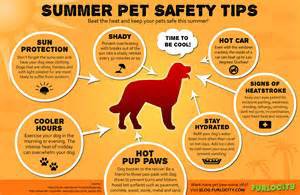
Below are some tips in the event your pet shows signs of heatstroke.
- Never leave your pet in the car on warm days. The temperature inside a car can rise very quickly to dangerous levels, even on milder days. Pets can succumb to heatstroke very easily and must be treated very quickly to give them the best chance of survival.
- If you cannot immediately get your pet to a veterinarian, move your pet to a shaded area and out of direct sunlight.
- Place a cool or cold, wet towel around its neck and head (do not cover your pet’s eyes, nose or mouth).
- Remove the towel, wring it out, and rewet it and rewrap it every few minutes as you cool the animal.
- Pour or use a hose to keep water running over the animal’s body (especially the abdomen and between the hind legs), and use your hands to massage its legs and sweep the water away as it absorbs the body heat.
- Transport the pet to a veterinarian as soon as possible.
Back to Emergency Care for Dogs Topics
Shock
There may be situations where your pet will experience shock, below are some tips that will help you.
- Symptoms: weak pulse, shallow breathing, nervousness, dazed eyes.
- Usually follows severe injury or extreme fright.
- Keep animal restrained, warm and quiet.
- If animal is unconscious, keep head level with rest of body.
- Transport the pet immediately to a veterinarian.
Back to Emergency Care for Dogs Topics
What To Do If Your Pet Is Not Breathing
- Stay calm and don’t panic as time is precious
- Have someone call the veterinarian while you help your pet.
- Check to see if your pet is unconscious.
- Open your pet’s airway by gently grasping its tongue and pulling it forward (out of the mouth) until it is flat. Check the animal’s throat to see if there are any foreign objects blocking the airway.
- Perform rescue breathing by closing your pet’s mouth (hold it closed with your hand) and breathing with your mouth directly into its nose until you see the animal’s chest expand. Once the chest expands, continue the rescue breathing once every 4 or 5 seconds. Continue doing this until he is breathing on his own or the vet arrives.
Back to Emergency Care for Dogs Topics
What To Do If Your Pet Has No Heartbeat
Do not begin chest compression until you’ve secured an airway and started rescue breathing (see above).
- Gently lay your pet on its right side on a firm surface. The heart is located in the lower half of the chest on the left side, just behind the elbow of the front left leg. Place one hand underneath the pet’s chest for support and place the other hand over the heart.
- For dogs, press down gently on your pet’s heart about one inch for medium-sized dogs; press harder for larger animals and with less force for smaller animals.
- To massage the hearts of cats and other tiny pets, cradle your hand around the animal’s chest so your thumb is on the left side of the chest and your fingers are on the right side of the chest, and compress the chest by squeezing it between your thumb and fingers.
- Press down 80-120 times per minute for larger animals and 100-150 times per minute for smaller ones.
- Don’t perform rescue breathing and chest compression at the same exact time; alternate the chest compression with the rescue breaths, or work as a team with another person so one person performs chest compression for 4-5 seconds and stops long enough to allow the other person to give one rescue breath.
- Continue until you can hear a heartbeat and your pet is breathing regularly, or you have arrived at the veterinary clinic and they can take over the resuscitation attempts.
Please remember that your pet’s likelihood of surviving with resuscitation is very low. However, in an emergency it may give your pet its only chance.
Back to Emergency Care for Dogs Topics
Evacuation Check List
 There may be some situation in which you must evacuate your home because of a natural disaster. In the event that you must leave your home, there are some items you should have in this emergency evacuation kit. Below are some of the items you should take with you when you have to evacuate.
There may be some situation in which you must evacuate your home because of a natural disaster. In the event that you must leave your home, there are some items you should have in this emergency evacuation kit. Below are some of the items you should take with you when you have to evacuate.
- Food & Water for Seven Days
- Medications & Records
- First Aid Book for Pets
- First Aid Kit for Pets
- Leash
- Harness or Collar
- Carrier or Crate
- Flashlight
- Poop Bags
- Photo & Description of Pets
- Vets Contact Information
- Grooming Items
- Paper Towels & Disinfectant
- Blankets or Towels
- His Favorite Toy
The above are just some of the items you will need for your pet in the event you must evacuate your home during a disaster or emergency. You can have most of the items above ready ahead of time placed in an area where everyone in the family knows where it is being stored.
Conclusion
The above should help you as a pet owner to be prepared for any emergencies if they should come up. Taking some time now to familiarize yourself with these tips can be helpful before the emergency happens so you don’t panic. Show all members of your household where you keep the emergency kit and first aid helps. Put the above items on a list and have it available for easy reference. This way you will be prepared for any emergency.
Back to Emergency Care for Dogs Topics
Shop Dog First Aid Kits
We have provided some first aid kits that you can shop for below. Select the one that best fits your situation.
As an Amazon associate, I earn from qualified purchases.
Go back to Dog.Dog Luxury Beds home page.
